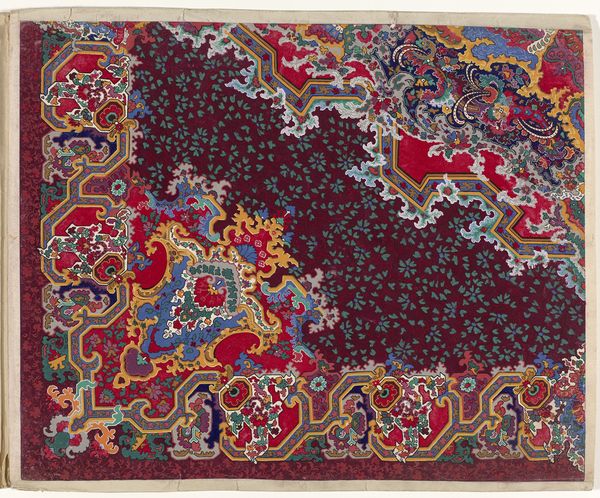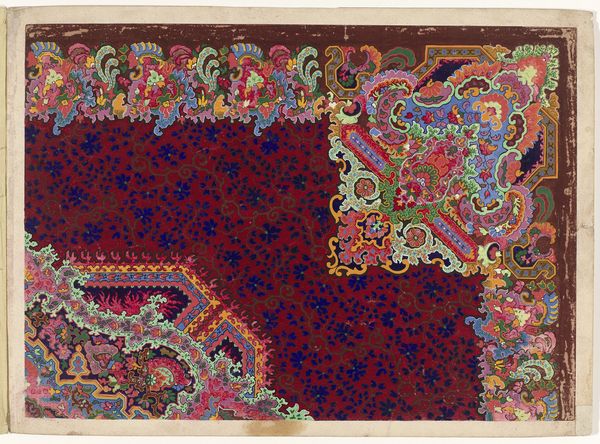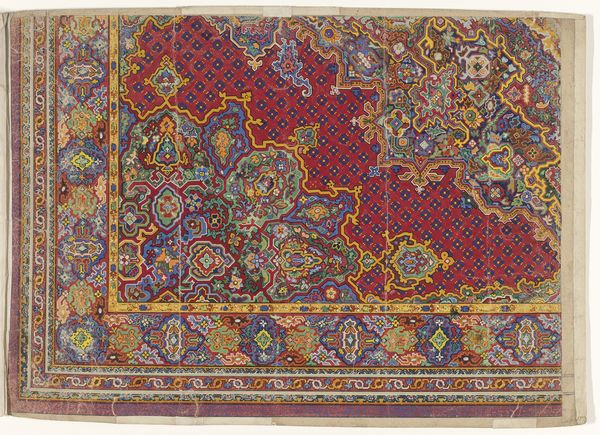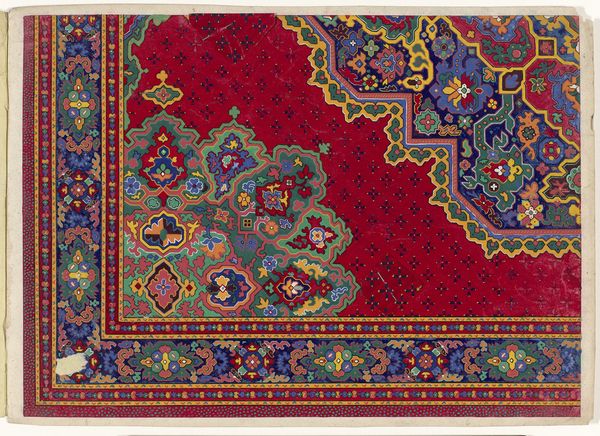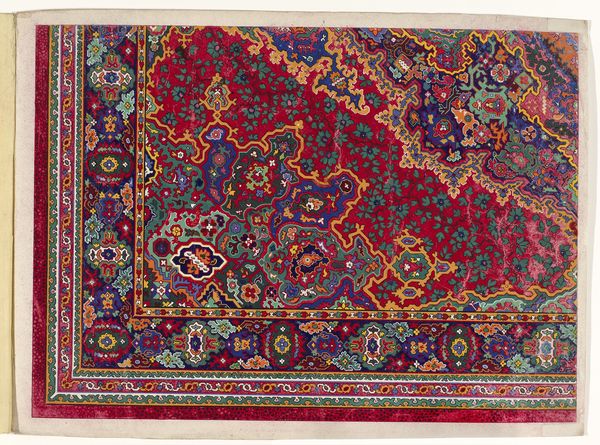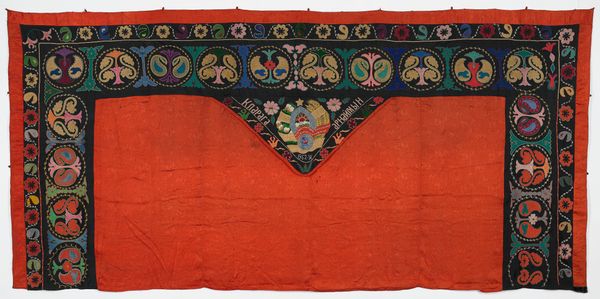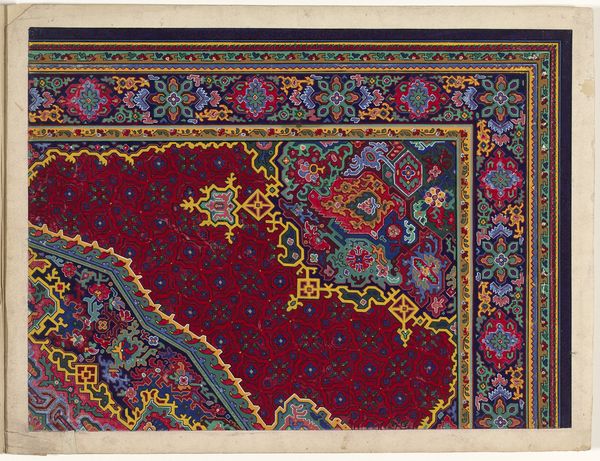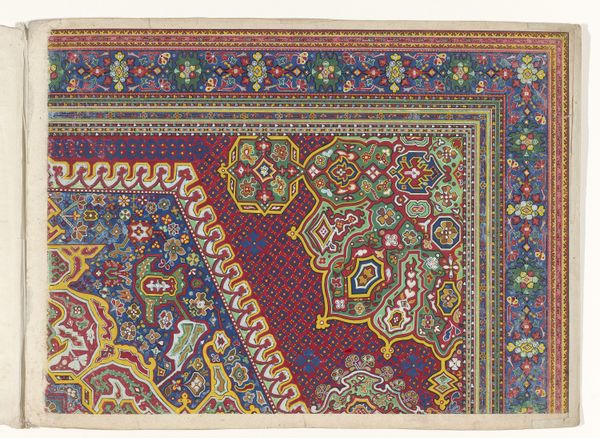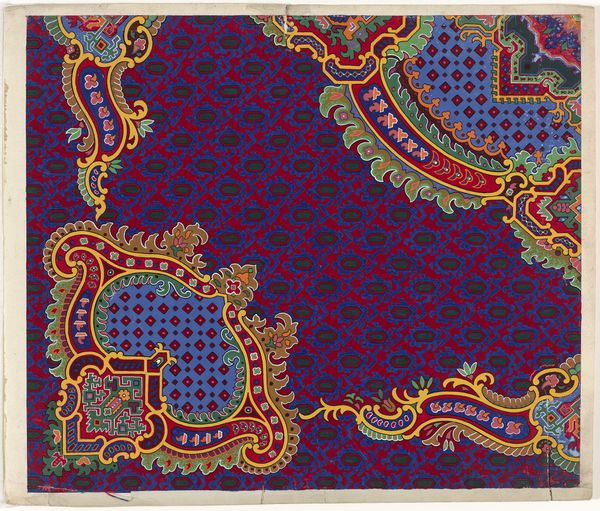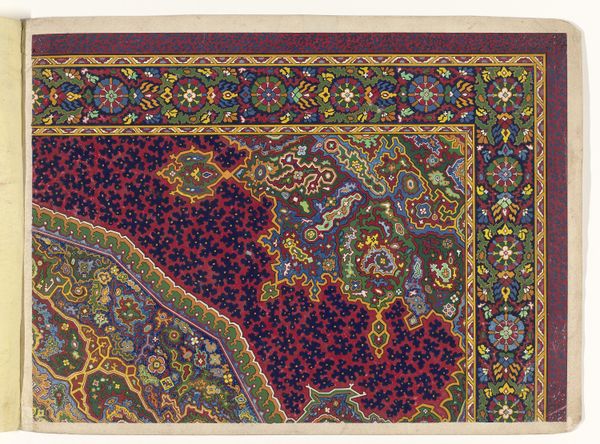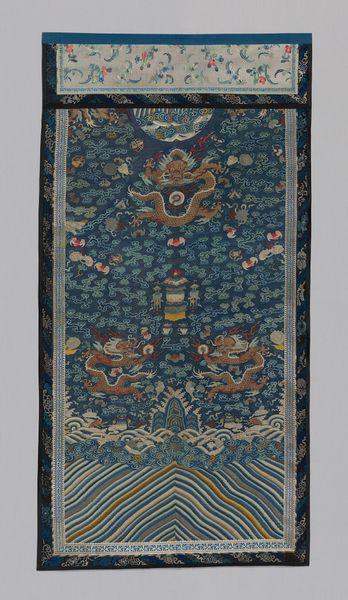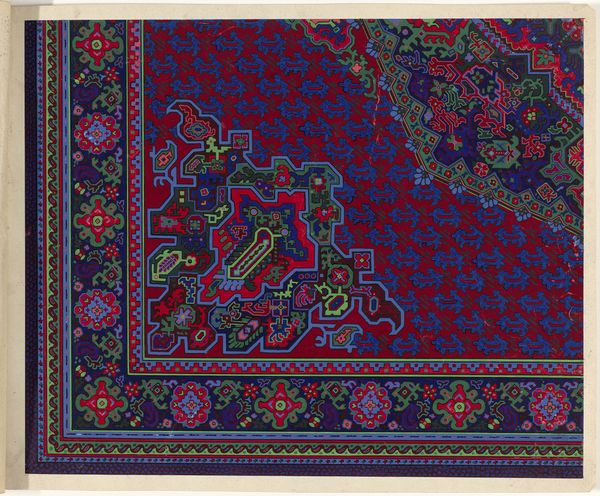
silk, textile
#
silk
#
asian-art
#
geometric composition
#
textile
#
geometric pattern
#
abstract pattern
#
pattern repetition
#
decorative-art
#
layered pattern
Copyright: Public Domain
This vibrant frontal for a Buddhist altar was created by an anonymous artist, and its precise origins remain a mystery. Immediately striking is its bold division into distinct color fields: a fiery orange band surmounts a luminous yellow expanse. Note the intricate embroidery adorning each section. The upper register features densely packed, symmetrical motifs that evoke ritual implements, while the lower field is alive with sinuous, organic forms suggestive of clouds and flora. The artist uses symmetry to structure visual order and convey symbolic meaning. This frontal integrates a semiotic system through its colors and symbols. Consider the interplay between the geometric precision of the upper section and the flowing dynamism of the lower one, and how such opposition reflects the interconnectedness of cosmic and earthly realms in Buddhist philosophy. Ultimately, this frontal serves not only as a decorative object but also as a conduit for contemplation, inviting viewers to decode its rich visual language.
Comments
minneapolisinstituteofart almost 2 years ago
⋮
Buddhist altar tables were usually skirted with decorative silk frontals, especially for major ceremonies. Probably made for a Lamaist temple in China, this embroidered frontal combines both Tibetan and Chinese symbols in its design. A crossed vajra, or thunderbolt, appears in the center. At the intersection of the two thunderbolts is a black-and-white yin and yang symbol, which represents the "balance of opposites" found in the universe, a concept developed by the Taoist philosophers of China. The background consists of lotus blossoms, a reference to the spiritual purity that this flower signified to all Buddhists. In the upper register six Chinese-style lanterns occupy a red ground. These most likely symbolize the "lantern festival," one of the celebrations associated with the Chinese New Year. In this context, they suggest that this altar frontal was used during New Year ceremonies.
Join the conversation
Join millions of artists and users on Artera today and experience the ultimate creative platform.
